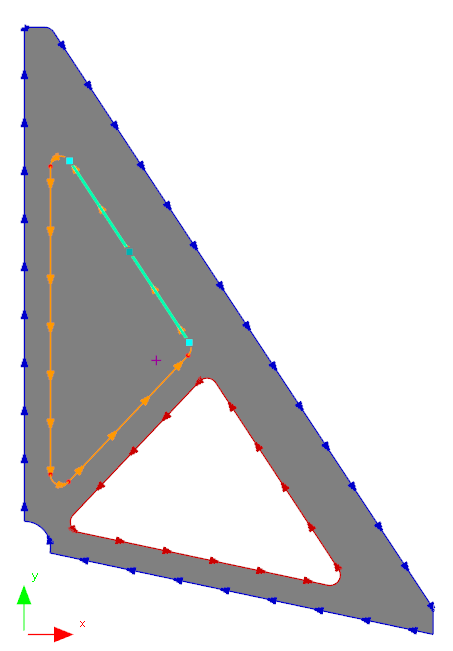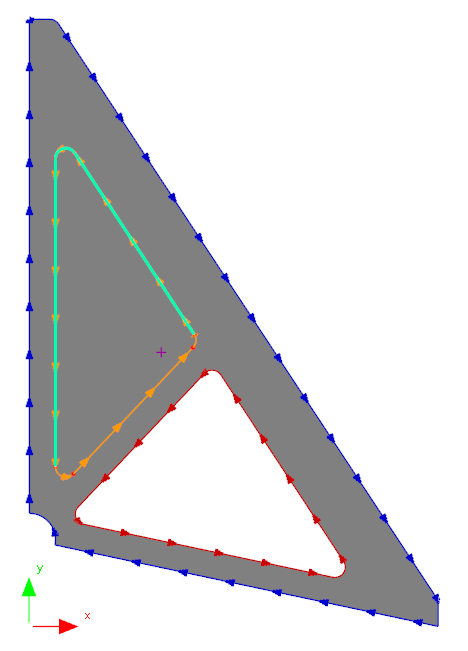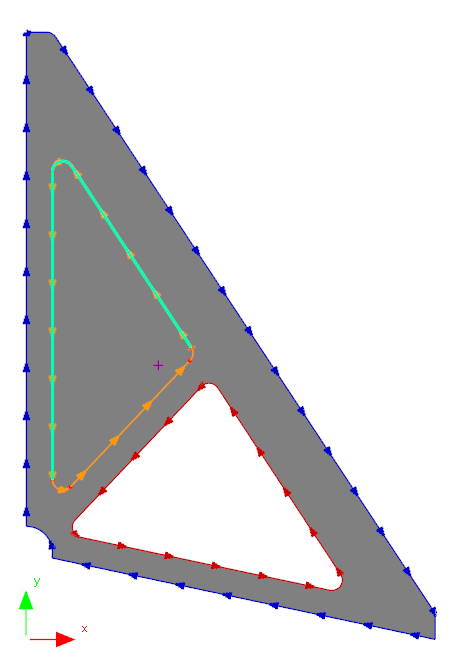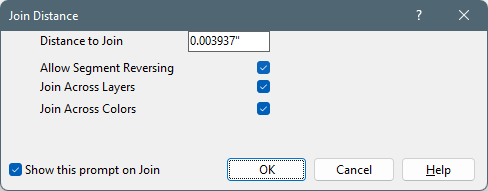Shortcut Key: Ctrl-J
See Also
After a part has been exploded and modified you will need to join it again to make it a closed path. It may also be necessary to manually close paths with Join if PrimeCut cannot uniquely decide how a path should be joined as it loads the part and tries to auto-join it; for example if 3 or more lines meet at a point.
It can work in two distinct ways depending on how many path segments are selected:
1.Single Segment Selected: If you select a single entity (which may be a single arc or line segment, or may be an already joined group of segments) and press the Join button then all entities leading up to it, and all entities adjacent to it will be joined. If possible it will keep joining entities until the path is closed.
 1 Segment selected before Join... |
 ...Results in all adjacent segments getting joined, and a closed internal path. |
2.Multiple Segments Selected: If you select more than one entity, then only those selected will be joined. This can provide more control in cases where there is ambiguity with multiple segments meeting at a point; you can "guide" PrimeCut around the part. You can select multiple segments across multiple resulting composite paths and PrimeCut will join what it can, but again it will not join to any unselected segments.
 3 Segments selected before Join... |
 ... Results in just these 3 segments being joined |
When you select Join from the context menu, the Join dialog will be displayed.

▪Distance to Join is the largest distance that is allowed to be joined. By using a relatively small value you can ensure that the feature does not join items that are not meant to be joined.
▪If some paths have the wrong direction, then you will need to tick the Allow Segment Reversing on the Join dialog for these to be joined.
▪Join Across Layers is usually enabled by default. You may wish to un-tick this when geometry exists on another layer that may interfere with the joining process. For example if unchecked, it will prevent geometry in a "marking" layer being joined into a path with geometry in a cutting layer.
▪Join Across Colors is usually enabled by default. Some users prefer to use color to encode tooling and particularly etching vs cutting in DWG/DXF files, in which case this should typically be unchecked, so that cutting and marking paths are kept distinct.
▪If Show this Prompt on Join is not ticked, then the existing settings will be used and the join operation will continue. In this situation you must change the settings using the User Options Dialog.
UPDATE version 4.132.468 onwards, you can now press Shift+Ctrl+J to "force" the join dialog to reappear.